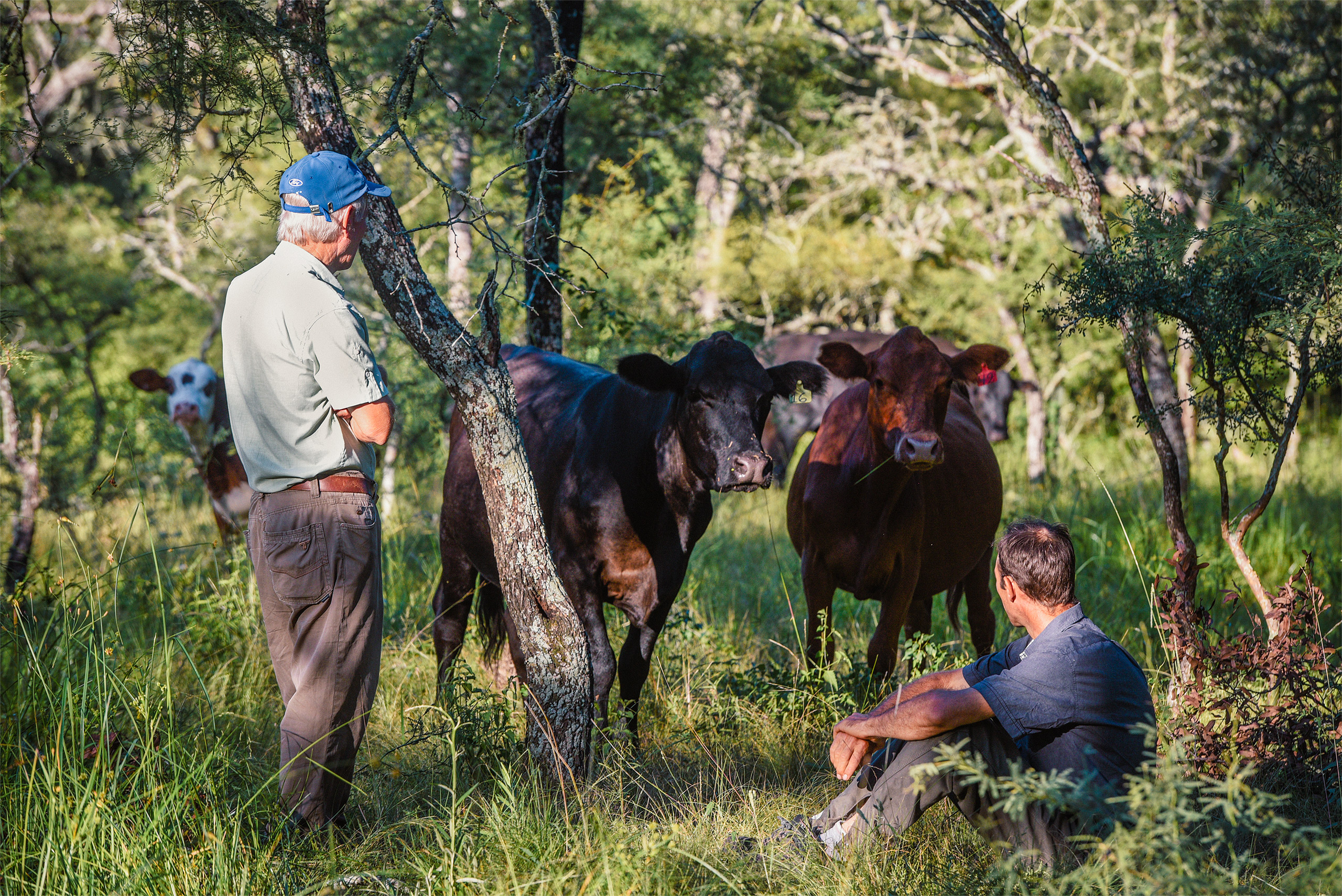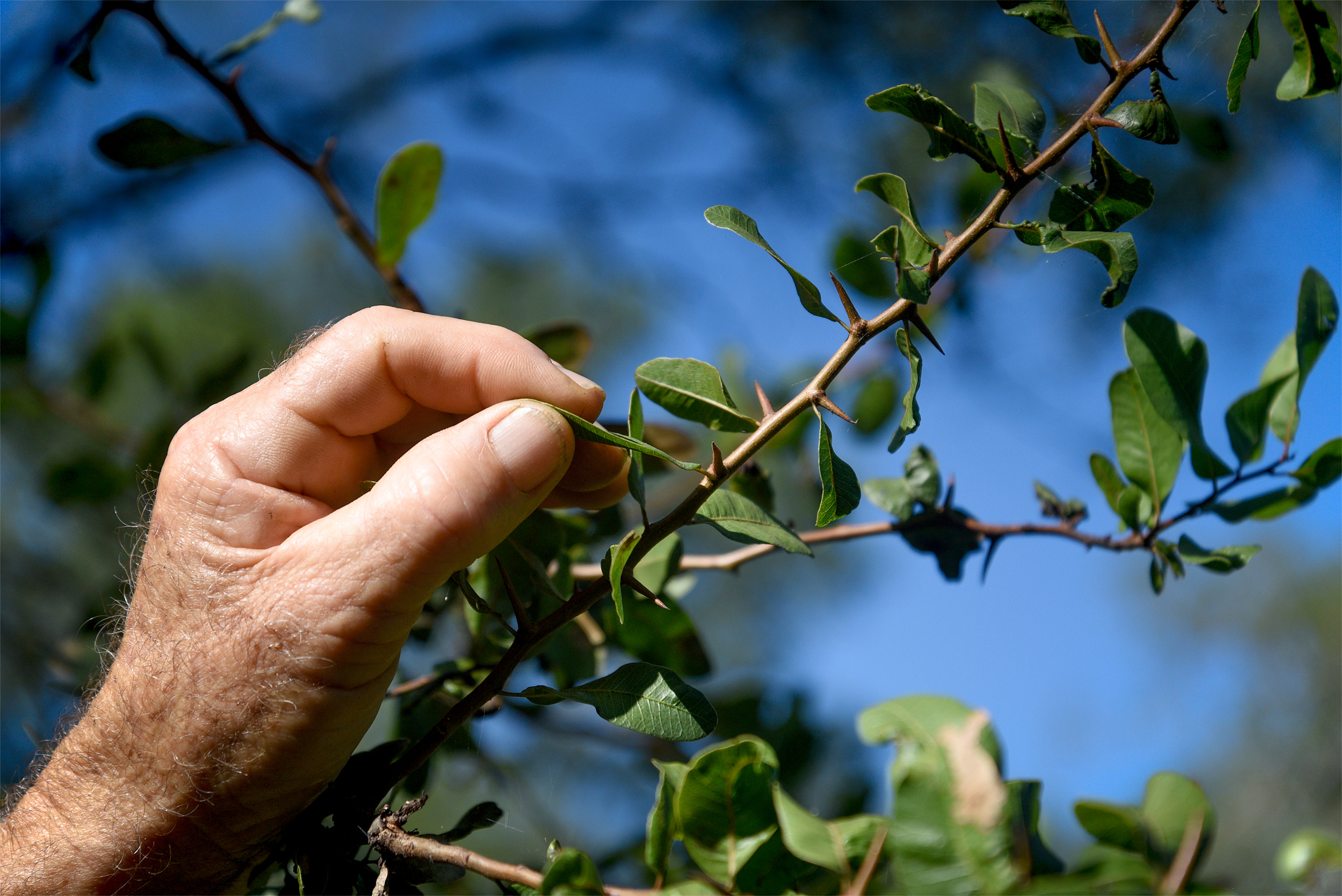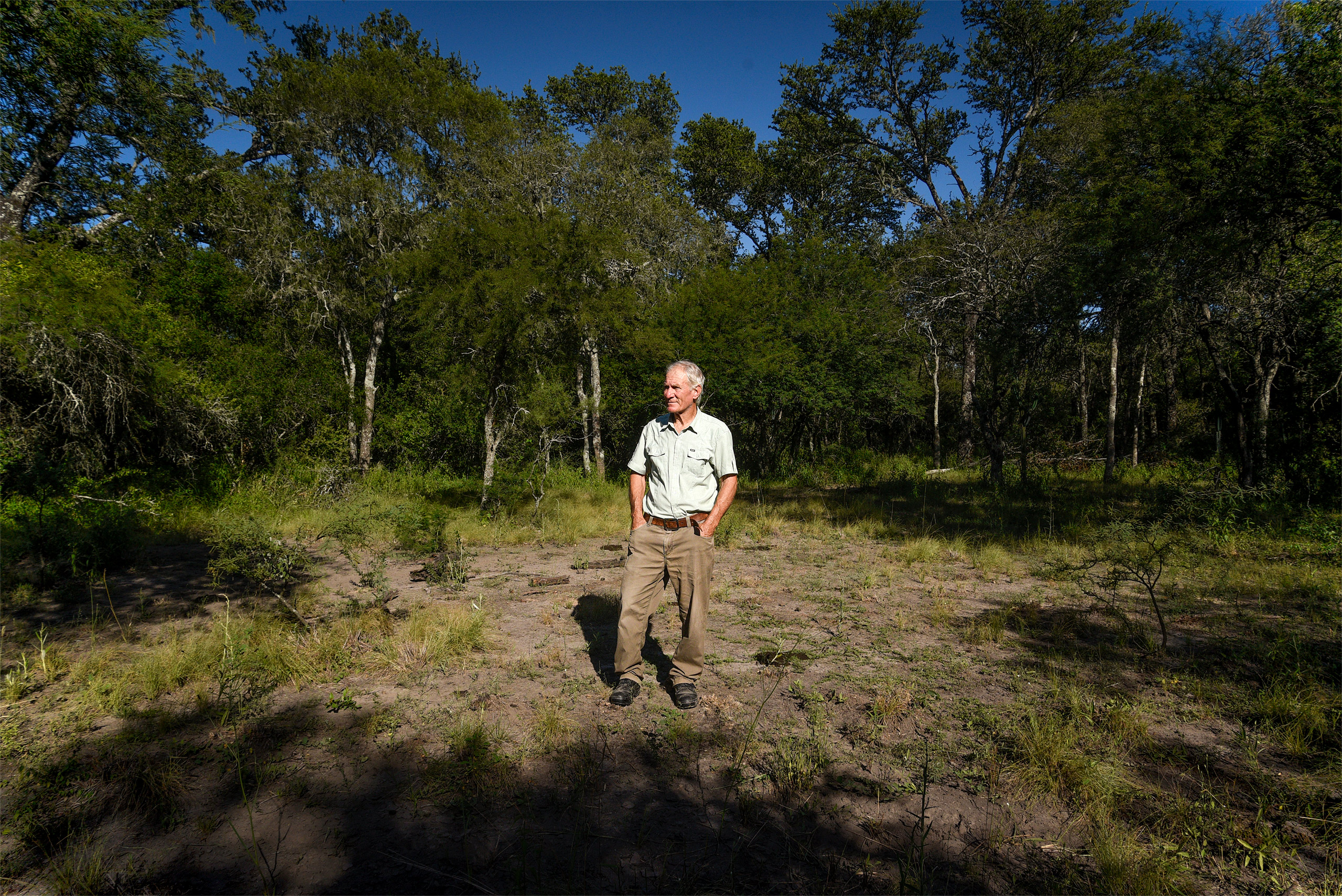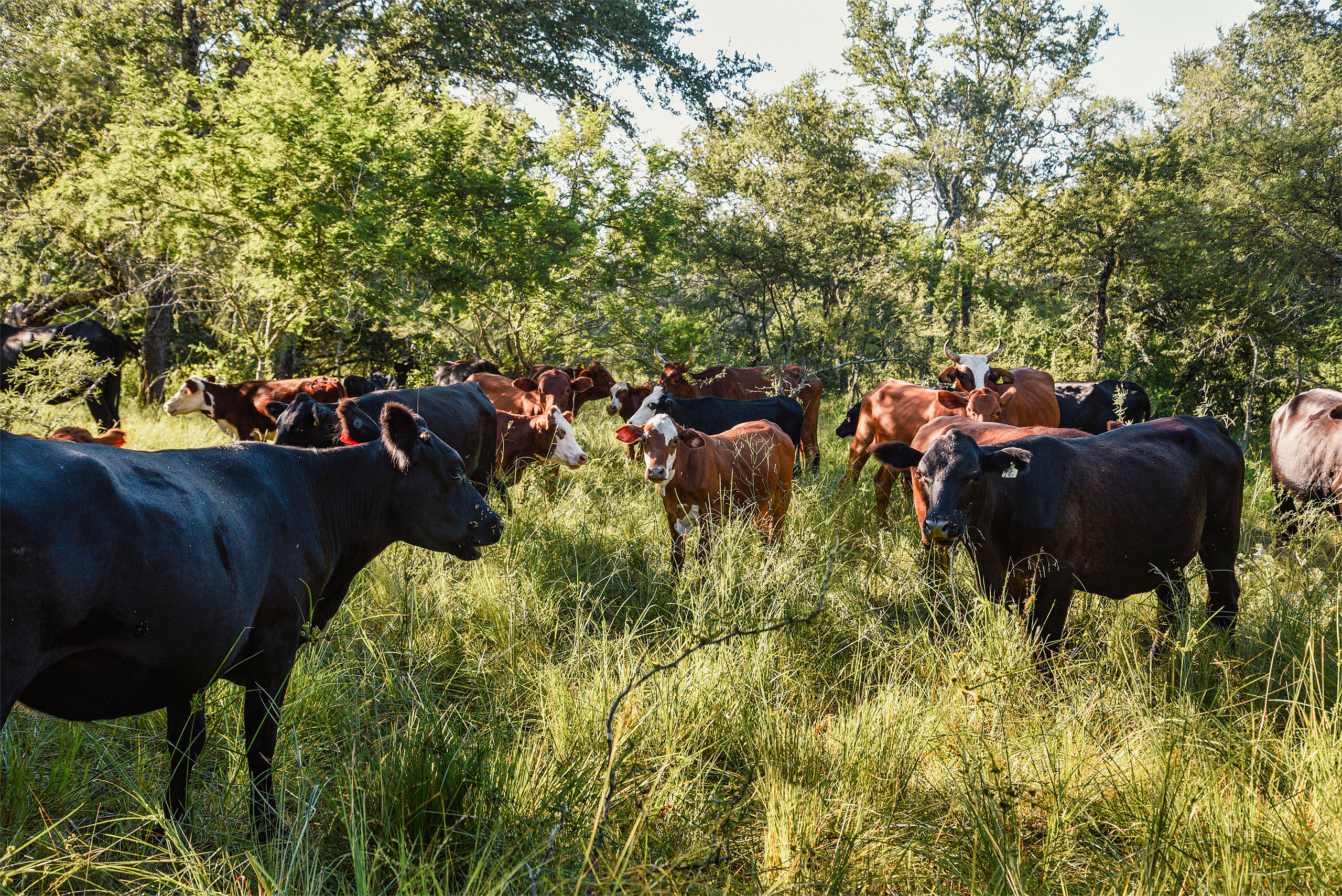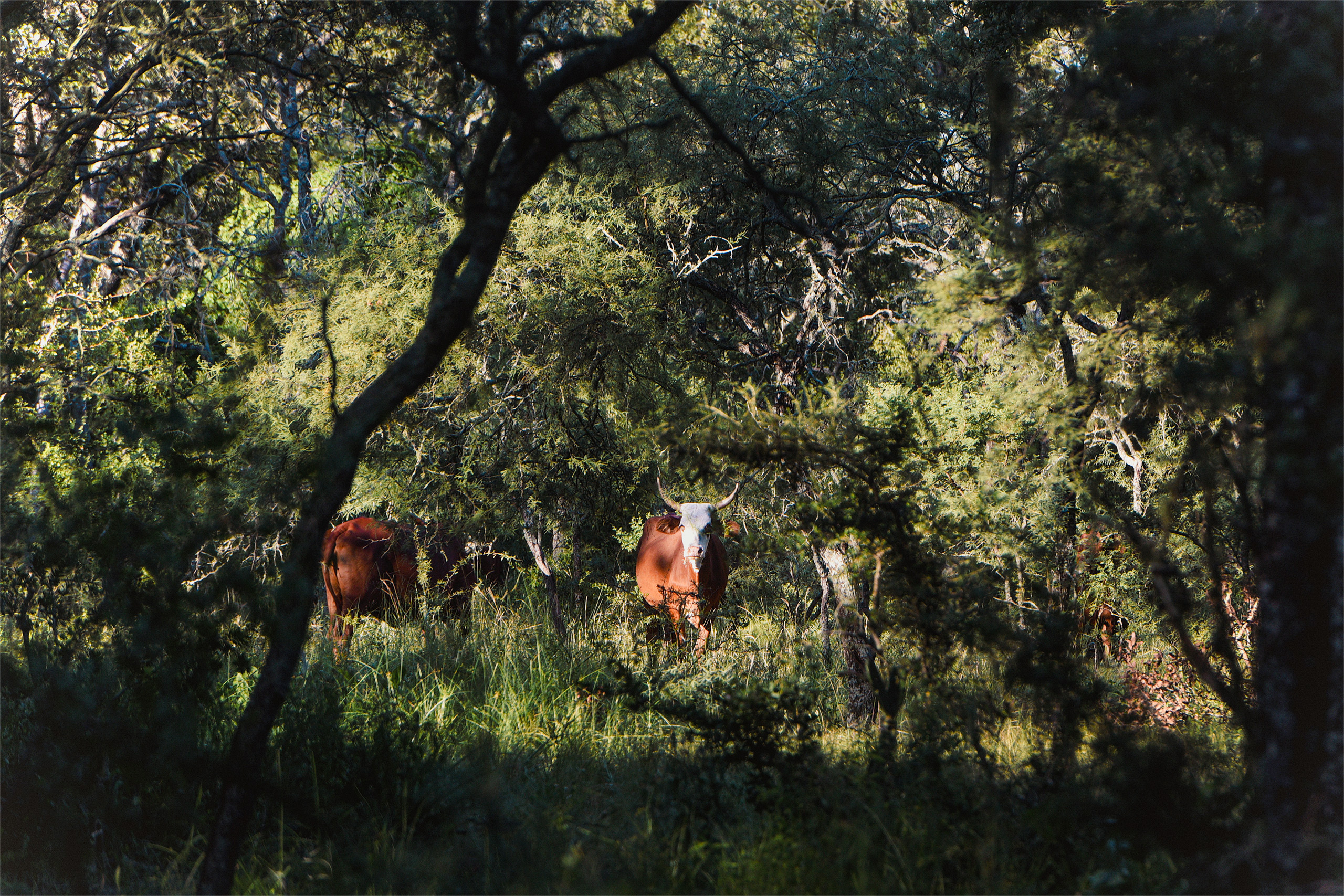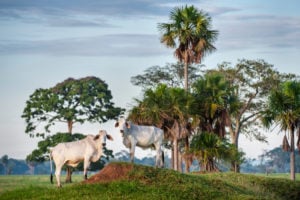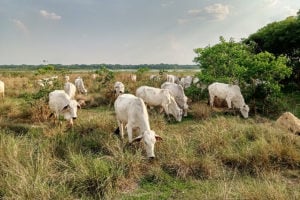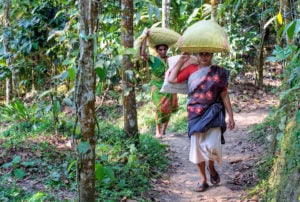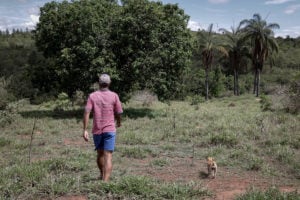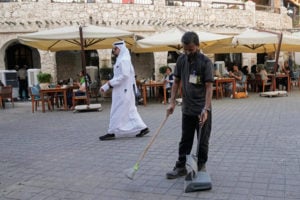For more than two decades, Abel Menapace and his son Leandro have practised a form of livestock farming that seeks balance with the environment in Argentina’s Gran Chaco region. Both agricultural engineers, the pair run a farm in the Cuña Boscosa ecoregion, which occupies more than one million hectares in the far north of the province of Santa Fe.
This family project combines management of native forests with livestock production, aiming to respect biodiversity, and is named San Francisco de Asís, after the 12th-century monk Francis of Assisi, the patron saint of ecology.
Local tree species intermingle here, including red and white quebracho and carob. Its biodiversity has attracted and welcomed the region’s fauna: some 200 species of birds share space and food with foxes, coypu, ñandus and armadillos, among many others. “Diversity is life, it is the opposite of monoculture,” says Abel.
Located some 20 kilometres from the town of Malabrigo, itself some 280 kilometres north of the provincial capital, Santa Fe, the Menapace farm is an example of the successful integration of livestock farming and forests. Not only has the farm managed to transform its previously depleted soils, but it has also reportedly helped to turn the 214-hectare site into a huge carbon store.
The role of native forests
Native forests are providers of essential ecosystem services for humans and other species. They contribute to climate change mitigation, help regulate water resources, provide livelihood options for local communities, and enhance food security and regional economic development. Argentina has an area of 47.9 million hectares of native forest, which are protected under the country’s 2007 Forest Law that provides zoning for the uses of forests to balance production needs and nature conservation.
The province of Santa Fe covers approximately 13 million hectares, of which 1.7 million is said to be native forest, protected by this law: 372,687 hectares are under category I or “red”, which requires strict conservation that prohibits any changes in land use; and 1.3 million hectares under category II or “yellow”, allowing for productive activities deemed compatible with the care of nature. The Menapace farm is located on category II land.
At the beginning of the 20th century, the exploitation of northern Santa Fe’s forest resources was dominated by British companies. Referred to as the era of “La Forestal”, after a prominent British firm of the time, this period of extractive activity forever changed the natural and social map of the region.
This process was portrayed in detail in a 1965 book by Santa Fe-born writer Gastón Gori. He recounts how an enormous forest of “red gold” that covered more than 2 million hectares was cut down with axes and machetes to satisfy international markets, seeking tannin for tanneries and logs to make railway sleepers or posts. The scars of the early exploitation to which its ecosystems were subjected are still visible in the area.
The Menapace establishment is an example of sustainable production with links to its community – the land is open to researchers, civil organisations, schools and universities. Abel has explained the farm’s ethos in his own book, which bring together years of work: “The idea is to give value to the native forest’s offer, its income in wood, fruit, fodder, honey flowers, medicinal essences, dyes, environments for walks, environmental services and at the same time, in an integrated way and in the same ecosystem, introduce cattle, improving the environment and obtaining an income from them.”
More forest, fewer emissions
Sixty percent of the native forests in Santa Fe’s Cuña Boscosa is classed as being fairly or poorly suited to livestock, while the rest is said to be suitable. This means that between three and five hectares are needed per cow in production, explains agronomist Germán Castro. He works at one of the National Institute of Agricultural Technology’s experimental stations, located 40 km south of the city of Reconquista, Santa Fe.
The Menapaces managed to reverse this trend: today, 70% of their farmland is classed as being either good or very good for keeping livestock, while the remaining 30% serves as a refuge for biodiversity. The ratio of animals per hectare never exceeds 1:1, which means that at peak times they can manage more than 150 head of cattle; at the beginning of 2024, after three years of severe drought, the stock was halved to about 75.
The key word here is management, explains Abel. First, they recognised that they had to intervene in the forest to keep it active, but that intervention should be based on respecting native species. “Each component of the ecosystem fulfils a function,” he adds.
These efforts are key to reducing the impact of livestock as a pollutant source: according to Argentina’s National Greenhouse Gas Inventory 2021, the agriculture, livestock and forestry sector accounts for 39% of Argentina’s emissions. If broken down into sub-sectors, livestock farming emerges as the activity with the highest emissions, representing 22.2% – almost twice as much as the next sub-sector, transport (13.9%).
Both the conservation of important portions of native biodiversity and the type of grazing used mean that the Menapace farm is likely to have comparatively lower greenhouse gas emissions than many other livestock operations, with its lands also contributing to carbon sequestration. This could help it to be more in line with Argentina’s long-term climate strategy, through which the country has committed to achieving carbon neutrality by 2050.
“When you walk through the field you see the carbon, it’s there in front of your eyes, in the mulch [a layer of organic matter formed by the decomposition of plant and animal matter], in the leaves, in the trunks, in the birds and mammals. It’s in the whole system and in the diversity that explodes everywhere,” says Castro.
Observation and handling
Key to the Menapace farm’s approach to production is forest management with integrated livestock – known in the local industry by its initials MBGI – a sustainable production strategy used on some farms in Argentina that integrates livestock and forestry activities. Under this method, cows can contribute in some way to ecosystem regeneration rather than just degradation.
Here, livestock production is a consequence and not an objectiveAbel Menapace, livestock farmer
MBGI integrates native forest into its production “as an agent providing ecosystem services” such as water regulation, soil and wildlife conservation and carbon sequestration, Castro explains. The National Institute of Agricultural Technology regularly monitors the Menapaces’ fields to establish the impact of these practices on livestock emissions.
Abel and Leandro Menapace describe the forest as an ecosystem with many components, each of which has a function. If the forest is healthy, the whole system is balanced. “Here livestock production is a consequence and not an objective, we work as a function of the whole ecosystem, not focused on the cow,” Abel says. One of the key elements of their approach is rotational grazing, which at the Menapace farm takes place across 90 plots. Each day, the cows move from one plot to another, finding fresh feed and allowing the recovery of the other plots.
Fernando Aiello, an agricultural sciences researcher and lecturer at Santa Fe’s Universidad Nacional del Litoral who specialises in natural grassland management, is familiar with the Menapaces’ experience. “They do very interesting work through rotational grazing, thanks to which they were able to recover winter species that grow under the forest trees, native forage species [plants eaten by livestock], something rare in forests where summer pastures are favoured,” he explains.
Climate resilience
Production and conservation go well together on the Menapace farm, coexisting and enhancing each other, according to Aiello. He says rotational grazing makes it possible to strengthen the production system in the face of extreme weather events, which are becoming more frequent and intense as a result of climate change.
Central Argentina experienced three consecutive years of water deficits between 2020 and 2023 driven by the La Niña climate phenomenon. Despite this, the Menapaces’ farm was able to maintain soil fertility thanks to grass and mulch cover, as well as efficient water use. “They had very positive results compared to their neighbours,” says Aiello.
“The accumulation of good practices based on rotational grazing and the observation of forage species and trees over time have allowed Abel and Leandro to build a very healthy, stable and reliable system, which is essential in a scenario of climate change where excess water and prolonged droughts alternate,” adds the specialist.
In terms of emissions, by prioritising the presence of actively growing young and adult trees over more mature trees, in addition to winter pastures, these farmers have been able to sustain high photosynthetic activity all year round. “It’s a very favourable situation for carbon sequestration. They have a lot of photosynthetic activity; the field is always green and active and that is very much linked to carbon sequestration,” says Aiello.
Livestock can be an emitter of greenhouse gases, or it can help capture them. It all depends on how it is doneGermán Castro, agronomist
For Castro, although he does not yet have the carbon capture data for the Menapaces, he says he has no doubt that it is at least double that which is emitted: “Each hectare has about 100 trees, more than 400 bushes, abundant pasture. All this is pure carbon capture.” He adds that the soil of the farm is an enormous reservoir of carbon as it continually receives a large amount of organic matter. “Livestock can be an emitter of greenhouse gases, or it can help capture them. It all depends on how it is done,” Castro claims.
Though the degree to which livestock grazing can assist carbon capture in pastures is still the subject of debate among scientists, the Menapace family’s efforts to pursue more sustainable practices are being welcomed and recognised as a positive step in the right direction. With Argentina facing a need to green its agriculture in the long term, their work may provide useful lessons to the wider industry.
This article was produced with the support of the Net Zero Argentina Project by the Earth Journalism Network, Periodistas por el Planeta, Claves21 and Banco de Bosques.
